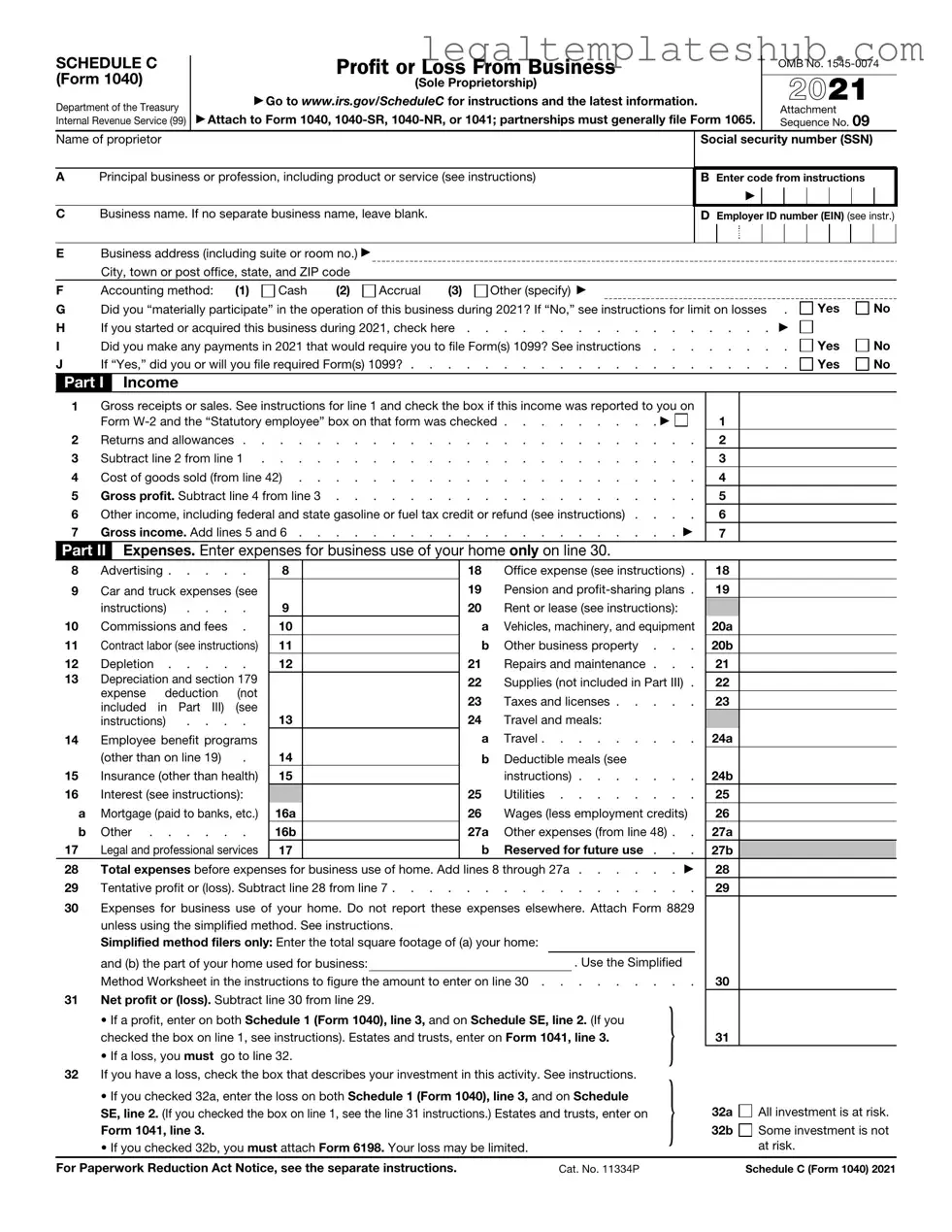Blank IRS Schedule C 1040 PDF Form
The IRS Schedule C 1040 form is used by sole proprietors to report income or loss from their business. This form helps individuals calculate their net profit or loss, which is then included in their personal income tax return. Completing this form accurately is essential for compliance with tax regulations, so be sure to fill it out carefully by clicking the button below.
Access Editor
